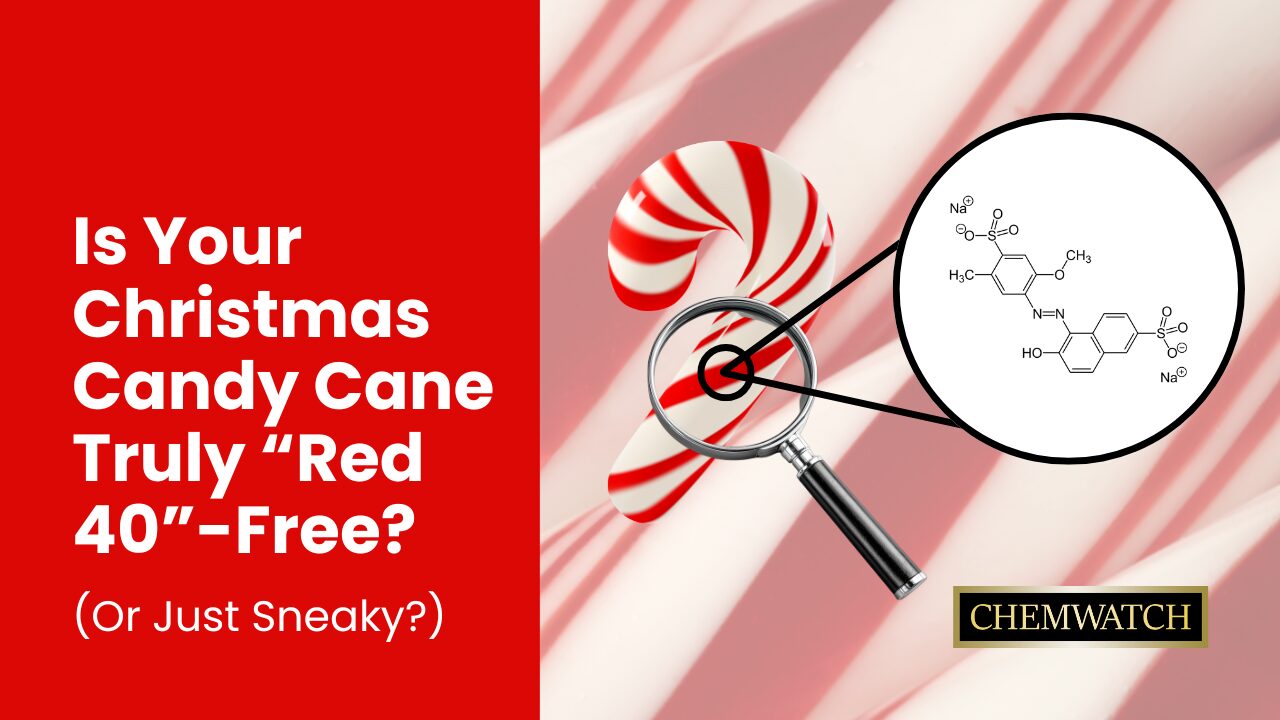
When we think of Christmas, candy canes come to mind as instantly as trees and twinkling lights. Their iconic red stripes and minty flavour are a nostalgic favourite. But as the holiday season approaches, one question is growing louder: Are candy canes Red 40 free? Or is Red 40 quietly hiding in those festive swirls?

According to the National Confectioners Association, candy canes are the No.1 selling non-chocolate candy during December, with 90% of sales happening between Thanksgiving and Christmas. But while they seem simple- just sugar, peppermint oil, and corn syrup- many candy canes include Red Dye 40, a synthetic food dye that's facing increasing scrutiny.
Behind that bright red stripe is often FD&C Red No. 40, also known as Allura Red AC, a petroleum-derived azo dye used for its stability and vibrant hue. In candy canes, it creates that unmistakable “Christmas” red, but this Red 40 chemistry comes with potential health concerns.
Many consumers assume the colour comes from peppermint or beetroot, but in reality, Red 40 is a synthetic food dye chosen for its consistency and low cost. As a result, it's become a standard ingredient in candy cane colouring, even though growing awareness of Red 40 health risks is prompting demand for natural candy cane colours.
Red 40 is an azo dye, meaning it contains one or more nitrogen-nitrogen double bonds (–N=N–) linking aromatic rings. This structure reflects red light and resists fading, making it ideal for holiday treats. But this same structure is what raises food dye concerns in health and regulatory communities.
When metabolised in the digestive tract, azo dyes can be broken down by gut bacteria into aromatic amines, some of which are known to be toxic or mutagenic. This process raises red flags about Red 40 safety and its impact on long-term health, especially with frequent or high consumption.
Recent studies are digging deeper into the biological effects of Red Dye 40, with growing focus on its role in inflammation, DNA damage, and behaviour.
In the United States, the FDA allows Red 40 in foods within defined limits, without any warning labels. But in Europe, the approach is stricter.
While not outright banned, Red 40 in candy canes sold in the EU must carry a warning:
"May have an adverse effect on activity and attention in children."
This EU food dye rule, introduced in 2010, has pushed most manufacturers to reformulate products using natural candy cane colours like beet juice, paprika extract, or carmine.
Meanwhile, in the US and Canada, candy cane ingredients remain largely unchanged, and Red 40 banned in Europe continues to appear in North American treats, often without consumer awareness.
A closer look at traditional candy cane ingredients reveals more chemistry than you might expect:
The iconic treat is a small marvel of food dye and chemistry, but also a reminder of how a single synthetic additive can raise larger questions about dietary safety.
Whether you're shopping for treats for your kids, choosing gifts, or indulging your sweet tooth, it's worth asking: is your candy cane Red 40-free?
Consumers are increasingly seeking out alternatives, opting for natural candy cane colours, simpler labels, or brands that disclose their food dye ingredients transparently.
Being informed about Red 40 health risks, its potential effects, and international regulation differences empowers you to make smarter choices, not just during the holidays, but year-round.
At Chemwatch, we help organisations, manufacturers, and regulators understand the risks associated with chemicals including synthetic food dyes. Our chemical databases, regulatory tracking tools, and safety data systems support compliance, transparency, and public health. Whether you're investigating azo dye exposure, food packaging chemicals, or emerging dietary safety concerns, Chemwatch offers the science-backed insight to make informed decisions. Contact Us today!
Sources